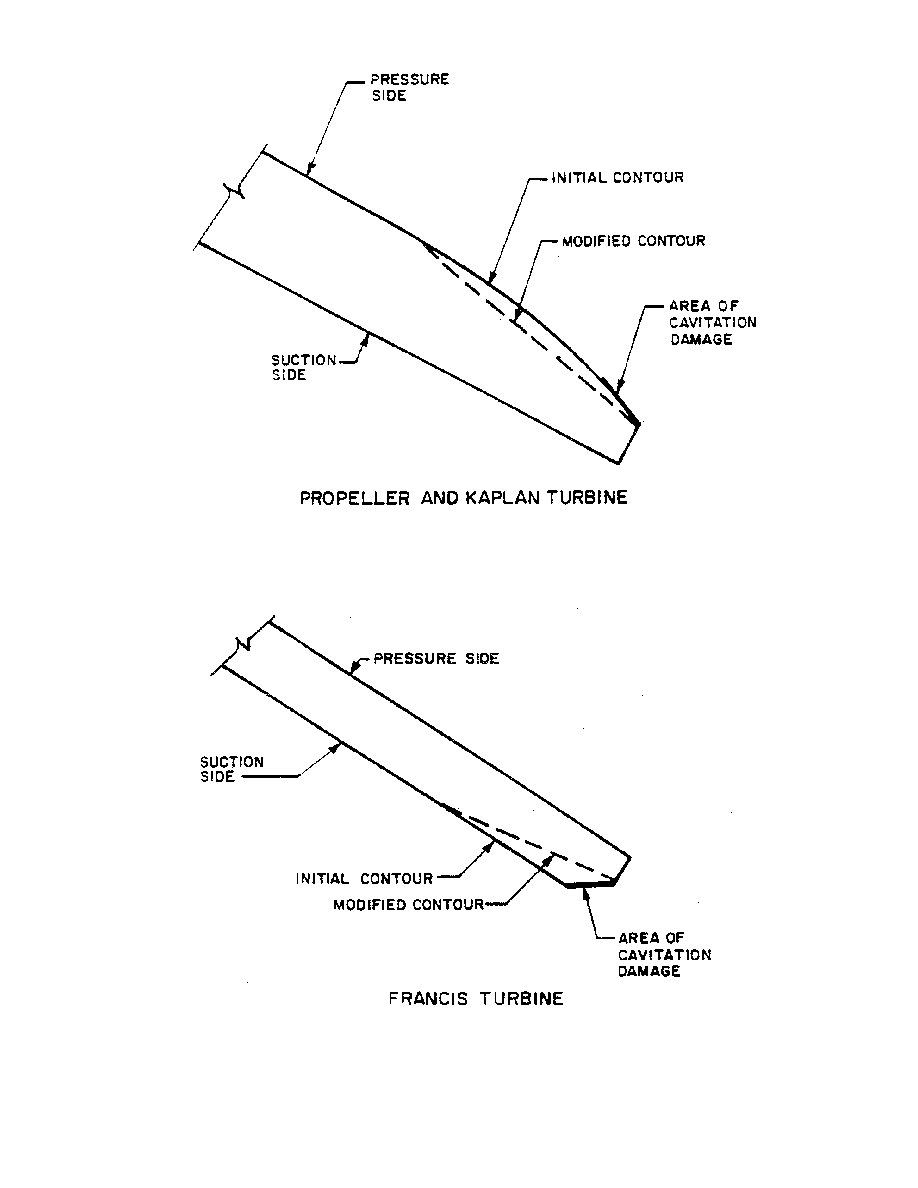

"Care must be taken when welding in areas which were previously repaired with
non-fused material. The heat may cause failure of any remaining material and may
also produce toxic fumes.
non-fused material. The heat may cause failure of any remaining material and may
also produce toxic fumes.
"Repairs by Welding With Solid Plate
"General. Cavitation pitting may be repaired by welding solid plate over the
damaged areas, however, this type of repair should be restricted to thick sections
where stresses are low. Also, the repair should not be in an area which is subjected
to vibration or dynamic loading.
damaged areas, however, this type of repair should be restricted to thick sections
where stresses are low. Also, the repair should not be in an area which is subjected
to vibration or dynamic loading.
"The same considerations as discussed previously for cavitation repair by welding
will govern. However, as this type of repair will be applied to thick sections and the
amount of weld will not be extensive (when compared to filling the damaged area
with weld material), potential problems with distortion are reduced.
will govern. However, as this type of repair will be applied to thick sections and the
amount of weld will not be extensive (when compared to filling the damaged area
with weld material), potential problems with distortion are reduced.
"Materials. Assuming the area to be repaired is carbon steel, the new plate should
be 304 stainless steel and the weld material 309. This method of repair is not
recommended for parent metals of stainless steel unless the repair is associated
with a blade profile change or a change in the method of operating the unit. The
repair will not be permanent unless cavitation intensity is decreased.
be 304 stainless steel and the weld material 309. This method of repair is not
recommended for parent metals of stainless steel unless the repair is associated
with a blade profile change or a change in the method of operating the unit. The
repair will not be permanent unless cavitation intensity is decreased.
"Process. Considering the type of welding, the shielded metal arc process is most
appropriate.
appropriate.
"Surface Preparation. Surface preparation should be by chipping, grinding, and
carbon arc gouging as discussed previously for repair by welding. The prepared
surface should be uniform in depth so that there will be contact between the plates
and the prepared surface below. Areas of deep cavitation will require build-up with
weld material to the depth of the surrounding surface. Surface preparation should
be such that the plates will contact the base material over about 80 percent of their
area.
carbon arc gouging as discussed previously for repair by welding. The prepared
surface should be uniform in depth so that there will be contact between the plates
and the prepared surface below. Areas of deep cavitation will require build-up with
weld material to the depth of the surrounding surface. Surface preparation should
be such that the plates will contact the base material over about 80 percent of their
area.
"Preheat. Preheat requirements will be as discussed for repairs by welding.
"Application. Plate sizes must be cut to suit the area to be covered; however, in
no case should be greater than 4 inches (102 mm) by 8 inches (203 mm), and
should have two holes for plug welding near the middle. Plates 4 inches (102 mm)
square should have one plug weld hole. The purpose of limiting plate size and to
have holes for plug welding is to minimize the effective span of the plate, thereby
increasing the strength of the repair.
no case should be greater than 4 inches (102 mm) by 8 inches (203 mm), and
should have two holes for plug welding near the middle. Plates 4 inches (102 mm)
square should have one plug weld hole. The purpose of limiting plate size and to
have holes for plug welding is to minimize the effective span of the plate, thereby
increasing the strength of the repair.
24